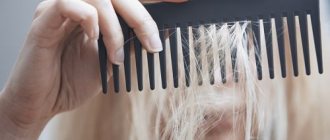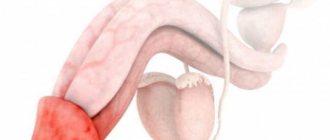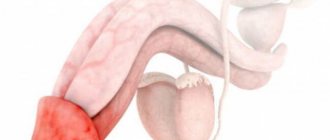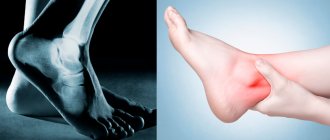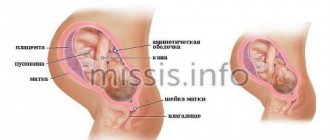Dental diseases include not only various problems with teeth, but also with lips, gums and simply the oral cavity. For example, cheilitis is an inflammation of the mucous membrane of the lips, which is characterized by the appearance of cracks in them. There is simple cheilitis (on the lips) and angular or angular cheilitis (in the corners of the lips), but there are also other types that depend on the causes. These types will be described a little later in the article.
The main symptoms of this disease
To suspect you have cheilitis and consult a dentist, you need to know the symptoms of this disease:
- Lips swell and become inflamed.
- The lips or the border around them become much redder than before.
- Cracks appear in the corners of the lips.
- Sometimes lips peel or crack.
- Sometimes lips become very dry.
- Sometimes your lips hurt or itch.
- Sometimes inflammation occurs in the form of gray or yellow blisters and ulcers (especially in advanced conditions).
As soon as all or some symptoms are detected (as you can see, many do not necessarily appear), you must immediately consult a doctor so that he can conduct the necessary examination, take tests and prescribe treatment.
Cracks on lips
10.04.2019
Modern dentistry is more than a medical institution.
Aesthetic services are consistently in demand among our patients. Teeth whitening and professional cleaning, installing sky bridges and straightening the smile line with veneers - all this is what our patients choose to look beautiful, young and well-groomed. At the same time, we, doctors, believe that true beauty always goes hand in hand with health. Today we want to talk about such a pressing problem as the appearance of cracks on the lips in the spring. The skin on the lips is thin and vulnerable, it does not have sebaceous glands, which means there is no fatty film that would protect against cold, heat or wind. Sometimes with the onset of spring, cracks appear on the lips. Probably every woman has encountered this phenomenon. Cracks spoil the appearance, cause inconvenience, interfere with a natural and open smile, causing discomfort. Today's UniDent article is about what causes them, how to prevent them and how to cure them at home yourself.
Why do cracked lips appear in spring?
The fact is that the delicate skin of the lips reacts to temperature changes, which are frequent during the changing seasons. In addition, spring vitamin deficiency plays a role, especially deficiency of vitamins A and E.
The skin of the lips also reacts to bad habits - smoking, love of strong coffee and salty foods.
In addition, some people have the habit of frequently licking their lips. Saliva, which contains enzymes and acids, also irritates and dries out the lips.
Dry, cracked lips can indicate certain diseases, such as diabetes. Therefore, if the cracks do not go away for a long time, it is better to consult a doctor.
If there are no diseases, but your lips are still cracking, you can try to cope with this problem yourself.
Preventing chapped lips
To protect your lips from the vagaries of the weather in spring, before going outside, you need to lubricate them with a protective balm or hygienic lipstick. The composition of such a product should be natural and include beeswax or vegetable wax, lanolin. These substances create a protective film.
Vitamins C and B12, as well as sun protection factor, will also help. It is better to choose a lipstick or gloss that contains these ingredients and renew the layer regularly.
It’s a good idea to nourish your skin with vitamins not only from the outside, but also to ensure they are supplied with food. To do this, you need to eat natural products, not fast food. The more varied the diet, the better for the skin. If you have to go on a diet, you can pick up a vitamin complex for yourself at the pharmacy.
Lip skin restoration
But what to do if there are already cracks? Engage in skin restoration and do everything for their speedy healing.
Those who are not allergic to honey can try honey masks. It takes a minimum of time. Just apply honey on your lips and wait 10 minutes - that's all. It’s even better if you apply this mask at night. Of course, not in a thick layer, but simply after applying the mask, walk around for a short time, then dry your lips a little with a napkin and, most importantly, do not wash off the mask completely.
A mixed mask - honey with olive oil - is useful and nutritious. This mixture can also be left overnight according to the same rules. The effect will be noticeable, the cracks will heal quickly.
It’s a good idea to lubricate your lips with oil alone, this will also benefit the skin.
A salt compress before bed is suitable for care. Dissolve half a teaspoon of sea salt in a glass of water, moisten a cotton swab with this mixture and press it to your lips for 5 - 10 minutes. Then apply oil or rich cream.
Regular care will help get rid of unpleasant cracks in the skin of your lips, look well-groomed and make your smile healthy and beautiful.
We wish you to smile joyfully and enjoy your health every spring day!
With love, UniDent.
Share information with friends:
Why does lip inflammation develop?
There are many reasons for the occurrence of cheilitis. Different reasons cause different types of lip inflammation. However, there are some common catalysts, for example, deficiency of vitamins, iron, calcium, excessive use of various medications (for example, antibiotics), constant exposure to drafts or living in a city with very low air temperatures in winter, strong and regular ultraviolet radiation, poor immunity.
The causative agents of allergic cheilitis are, of course, allergic reactions to cosmetics or food, infectious - various diseases (viruses, fungi), glandular - dermatological diseases, meteorological - frequent chapped lips and being outside without hygienic lipstick, and candidal - stomatitis and simply poor care behind the oral cavity.
Exfoliative cheilitis occurs in those who often bite off pieces of skin from their lips or simply constantly lick them (observed only in women). These actions can be triggered by frequent anxiety and stress. Manganotti cheilitis occurs only in adult men and is provoked by various injuries to the oral cavity, stomach diseases, frequent and long exposure to the sun or in a solarium, as well as clear signs of aging, which are caused by the fact that the mucous membrane is now regenerating more slowly. Hypovitaminosis occurs due to a lack of vitamins B2, B2 and other B vitamins.
Cheilitis in children
Depending on the age of the child, he may experience a certain type of cheilitis.
Newborns suffer from a catarrhal disease caused by the prolonged presence of a pacifier or bottle in the mouth. Plus, saliva accumulates on the nipples of the lips, irritating sensitive baby skin.
If the disease is ignored, hoping that it will go away on its own, cheilitis will develop into an exfoliative form, accompanied by the formation of scales, which the child will not be able to remove himself (parents are highly discouraged from interfering in this process, since attempts to tear off the crusts can cause cracks, which will only aggravate the situation ).
Constant sucking of the mother's breast is an equally common cause of the development of the disease: during feeding, cracks form on the nipples, into which bacteria penetrate, which causes cheilitis.
Disease prognosis
Varicose veins of the uterus and perineum are not a life-threatening disease. But it is important to note that the quality of life of patients is significantly reduced. In addition to aesthetic discomfort, large perineal phleboectasis can cause painful symptoms during menstruation and complicate sexual life. Sometimes varicose veins become inflamed, causing a lot of physical suffering to patients. You should not count on the therapeutic effect of ointments and tablets - such therapy is not effective, but only eliminating the causes of varicose veins and the venous nodes themselves using sclerotherapy or miniphlebectomy allows one to achieve excellent therapeutic and aesthetic results in all patients. At the Innovative Vascular Center, complete treatment of this disease is possible. We successfully perform endovascular correction of deep vein pathology, eliminate varicose veins of the small pelvis and venous vessels on the genitals.
Causes of cheilitis
Cheilitis can be an independent disease and a manifestation of other pathologies of the mucous membranes and internal organs. The most common causes of the disease include:
- Dermatoses. The mucous membranes and skin of the lips can be involved in the pathological process in lichen planus, psoriasis, erythematoses and other skin diseases.
- Unfavorable factors. Exposure to hot and cold air, wind, and excessive exposure to UV rays are especially common causes of cheilitis in people who work outdoors and under special weather conditions.
- Allergic reactions. Allergies can be triggered by chemical factors, ultraviolet rays, cosmetics, etc.;
- Other diseases. Secondary cheilitis often develops against the background of atopic dermatitis, eczema, neuritis of the facial nerve, etc.
Natural protective mechanisms are weakened by such factors as hypothermia, previous surgical interventions, long-term antibacterial therapy, hypovitaminosis, etc.
Ask a Question
Treatment
Different forms of cheilitis differ in their approach to treatment. Collectively, the impact may include:
- correction of the psycho-emotional sphere - a neurologist prescribes sedatives, tranquilizers, a psychologist or psychotherapist conducts appropriate psychotherapy;
- physiotherapy - treatment with laser, ultrasound, magnetotherapy, electrophoresis is prescribed locally; they relieve irritation and accelerate tissue regeneration;
- drug symptomatic therapy - non-hormonal anti-inflammatory drugs are prescribed; in case of severe inflammation - hormonal drugs;
- immunotherapy – strengthen the immune system by taking immunomodulators and immunostimulants;
- vitamin therapy - taking vitamins A, C, group B (mainly vitamin B2) is of great importance;
- surgical treatment – typical for glandular cheilitis with enlargement of the salivary glands; Both laser ablation with a surgical laser and direct removal of areas of the gland are used;
- antiallergic therapy with antihistamines.
Additionally, the doctor may prescribe diet therapy with the exclusion of foods that provoke allergies or chemical irritation of tissues (spicy foods, saltiness and marinades). When staying outdoors for a long time, it is imperative to use special protective equipment.
Why this problem needs to be solved
A chapped lip as a cosmetic defect is only part of the problem. Sooner or later it begins to hurt, causes digestion difficulties, and interferes with normal oral hygiene. This is because any attempt to stretch the lips causes pain and further damages the already damaged tissue. As a rule, the crack begins to bleed even with slight movement of the lips, even after a long period of rest.
If the problem is not solved, after a few months the edges of the crack become covered with keratinized scales, then dark red seals form, and small papillomas appear at the bottom. With such a history, laser removal of papillomas is not practiced, since the problem may be of a much more global nature: the patient needs an urgent consultation with an oncologist.
Treatment methods
The treatment plan for cheilitis is developed individually, depending on the form of the disease, the severity of symptoms, and the characteristics of the health condition. Thus, in the treatment of the exfoliative form of the disease, the key element of effective treatment is the impact on the psycho-emotional sphere: you will need to contact a neurologist or psychoneurologist to prescribe sedatives and antidepressants according to indications. Consultation with an endocrinologist may be required.
Local treatment may involve the use of laser or ultrasound physiotherapy, local anti-inflammatory drugs, and less commonly, radiation therapy. Elimination of excessive dryness is possible with the help of hygienic lipsticks. To speed up recovery, the doctor may prescribe vitamin therapy, UVOC and other methods of maintaining the body's defenses.
Therapy for glandular cheilitis consists of using local anti-inflammatory agents. Antibacterial, antiviral, and hormonal ointments can be used. A radical method of therapy is electrocoagulation of the salivary glands or their surgical removal, as well as laser ablation. These methods are used when conservative methods are ineffective. After the main course, the doctor will prescribe medications to prevent relapses - they will eliminate dry or weeping skin. It is important to sanitize the oral cavity in a timely manner and undergo professional teeth cleaning.
Treatment of atopic cheilitis consists of eliminating irritating factors. Drugs with antipruritic and anti-inflammatory effects can be used locally, and therapy with antihistamines with a systemic effect is also carried out. The use of glucocorticosteroids allows you to get quick relief, but it is important to strictly adhere to medical prescriptions - they can only be used for a short time. It is important to follow a hypoallergenic diet and remove allergenic foods from the diet.
Therapy for meteorological cheilitis begins with limiting harmful effects, for example, insolation. Local treatment is usually carried out - the doctor prescribes hormonal agents and protective creams, including those with SPF. The course of treatment is supplemented with vitamins - vitamin-mineral complexes or individual preparations (B, PP, C, etc.).
In the treatment of macrocheilitis, immunocorrective and antiviral therapy is of particular importance. The doctor may prescribe:
- hormonal anti-inflammatory drugs of systemic action;
- novocaine blockades;
- antihistamines, etc.
Laser therapy can have a positive effect on the correction of the entire triad of symptoms. Other physical therapy methods have been successful in treating facial neuritis.
Cheilitis - symptoms and treatment
The lip consists of three sections: cutaneous, transitional (red border of the lips) and mucous. Deep in the lips is the orbicularis oris muscle, which is responsible for their movements.
The cutaneous section is similar to normal skin: it contains hair, sweat and sebaceous glands, and keratinizing epithelium. In the keratinizing epithelium, scales are formed that protect the underlying layers of the skin. Over time, the scales fall off and are replaced by new ones.
The transitional region is different from the skin: there is no hair and sweat glands, the sebaceous glands remain only in the corners of the mouth. They perform a protective function so that open areas of the lips do not dry out. The keratinizing epithelium gradually turns into non-keratinizing epithelium, i.e., protective scales do not form on it.
In the mucous membrane, the sebaceous glands completely disappear, the epithelium becomes non-keratinized and small salivary glands appear.
Cheilitis can be accompanied by various manifestations: scales, crusts, cracks, erythema, blisters and erosion.
Scales in cheilitis are silvery plates that form after the death and rejection of a layer of surface tissue. The keratinizing epithelium can only be seen under magnification, but the scales are immediately noticeable. They can also appear on non-keratinizing epithelium if its cells have died.
The next pathological element is the crust. It is similar to a scale, but is formed if the death of surface cells is complicated by inflammation. Fluid containing immune cells emerges from the blood vessels, and the scales swell and turn into crusts. Due to the fact that there is more fluid between the cells, the adjacent tissues increase. They begin to compress pain receptors, and pain occurs.
Cracks are painful defects in the form of straight lines. They occur when lips become dry and lose their elasticity. They can appear due to bad habits such as smoking and lip biting, as well as burns, physical and chemical trauma.
Cracks can heal and reappear after some time, often in the same place. This cycle can be seasonal, for example worsening in winter due to adverse weather conditions or weakened immunity.
Erythema is a red spot without clear boundaries, most often due to allergies. Usually painless, but sometimes its sensitivity increases slightly.
A vesicle is a small formation above the surface of the skin or mucous membrane. Inside it there is a liquid - blood plasma with living and dead immune cells and microorganisms; in more severe cases it is called exudate, or pus. The appearance of fluid is often preceded by an infection, to which the body's immune cells react.
Erosion is a pink or red formation that appears at the site of a large burst bubble. It is painful when touched. It differs from erythema by clearly defined boundaries and location below the level of the skin or mucous membrane, forming a small “pit”.
Diagnosis of cheilitis
There are no specific laboratory tests to detect cheilitis. All diagnosis of the disease is carried out by visual examination. To determine the causes of inflammation, diagnostics of the gastrointestinal tract may be prescribed for the presence of Crohn's disease or ulcerative colitis. Additionally, allergy tests are performed to exclude food allergies.
General laboratory tests allow you to check the condition of the body and determine the possible causes of cheilitis:
- low levels of vitamins due to hypovitaminosis can provoke exfoliative cheilitis;
- bacterial cultures of smears and biopsies are performed in patients with immune system disorders in the absence of results from the treatment;
- testing for markers of HIV infection, herpes, the presence of fungal or bacterial microflora, respectively, allows us to identify the viral, bacterial or fungal causative agent of cheilitis;
- a blood test for anemia, ESR are required to assess general health;
- examination of the function of the thyroid and pancreas for endocrine pathologies.
On a note! Cheilitis tends to be chronic with periodic relapses. Self-healing without medical supervision is almost impossible, so try to pay attention to such a “minor” problem and consult a specialist. Diagnosis of the disease is carried out by a general practitioner or attending dentist. In some cases, consultation with an allergist, infectious diseases specialist, dermatovenerologist or gastroenterologist may be required.
Arteriovenous compression
- Aorto-mesenteric compression of the left renal vein
Aorto-mesenteric compression of the left renal vein (aorto-mesenteric “tweezers”, nutcracker syndrome, mesoaortic compression syndrome of the left renal vein) is a situation in which the left renal vein is compressed between the aorta and the superior mesenteric artery. This leads to disturbances in the outflow of blood in the left renal vein, expansion and formation of “reverse” blood flow through the left gonadal vein with the formation of symptoms of varicose veins of the female genital organs.
- May-Turner syndrome
May-Turner syndrome is a situation in which the left common iliac vein is compressed by the right common iliac artery, leading to expansion of the common iliac vein below the site of compression and overflow of the pelvic vessels with venous blood. We also often observe the development of varicose veins - expansion of the left lower limb, the formation of persistent swelling of the soft tissues of the left lower limb and even trophic disorders (pigmentation). Most often, with May-Turner syndrome, varicose veins on the outer labia develop during pregnancy and remain forever after pregnancy (photo).
- Postthrombotic disease
Quite often one can observe the development of pelvic varicose veins in patients who have previously suffered deep vein thrombosis (especially proximal thrombosis) when there is a residual narrowing of the lumen or complete occlusion of the lumen of the common iliac vein. In this case, the outflow of blood from the pelvic organs is sharply hampered and, as a consequence, the expansion of the lumen of blood vessels and the development of pelvic varicose veins.
- Venous dysplasia
This is a malformation of the superficial or deep veins that occurs in the early phases of the formation of the vascular system of the embryo in the period from 4 to 8 weeks of intrauterine development. Venous dysplasia leads to the appearance of varicose veins of the minor lips. The diagnosis of dysplasia can be established provided that other causes of dilation of the genital vessels are excluded. Dysplasias look like dense vascular spots that are difficult to empty when squeezed. They resemble tumor-like formations more than dilated varicose veins.
Predisposing factors in the development of genital varicose veins in women
Varicose veins on the labia have a genetic predisposition - the mechanism of the disease is similar to varicose veins of the lower extremities. The basis is dysfunction of the valves of the gonadal veins. Physical activity, frequent pregnancies, engorgement of the genital organs during prolonged sexual intercourse contribute to vascular stretching with the development of venous stagnation. The appearance of varicose veins of the labia during pregnancy usually occurs in the second trimester and reaches a maximum closer to childbirth. After childbirth, these varicose veins, which developed during pregnancy on the labia, most often regress, but sometimes remain for life due to changes in the structure of the vascular walls.
Symptoms and complaints of perineal varicose veins
In the classic version, there is a triad of symptoms:
- Pelvic pain.
- Varicose veins of the labia and perineum.
- Dysmenorrhea is a cyclical process, when during menstruation severe pain in the lower abdomen, heavy menstrual bleeding, and menstrual irregularities may appear.
- With a long course of the disease, the development of dyspareunia is possible - painful sensations in the lower abdomen that occur during or after sexual intercourse. A peculiarity of this symptom is the persistence of pain for at least 30 minutes and up to a day after sexual intercourse.
How to get rid of unpleasant symptoms at home
It is not worth treating at home without seeing a doctor. However, there are ways that you can resort to to reduce discomfort:
- If your lips become inflamed due to the sun or cold, it is advisable that they are always covered with a protective layer of balm.
- For severe itching and burning, which occur in almost all forms of cheilitis, cold compresses will help. Before applying them, the skin is covered with a layer of balm so that the lips are treated simultaneously with the reduction of pain.
- If your lips are red and covered with cracks, sores or any other open wounds, you need to make sure that bacteria do not get into them. The surrounding skin and teeth should be treated with a cotton pad soaked in hydrogen peroxide or Miramistin. Special antiseptic ointments will have the best effect.
- If pain and itching are unbearable, painkillers can be used. Ointments with a cooling effect will have the same effect.
All methods of folk treatment for cheilitis will be useless if you resort to them thoughtlessly - without consulting a doctor. In most cases, inflammation, redness and itching of the lips are harmless. Such symptoms can go away even without therapy, but sometimes they indicate dangerous diseases, so medical help should not be neglected.



